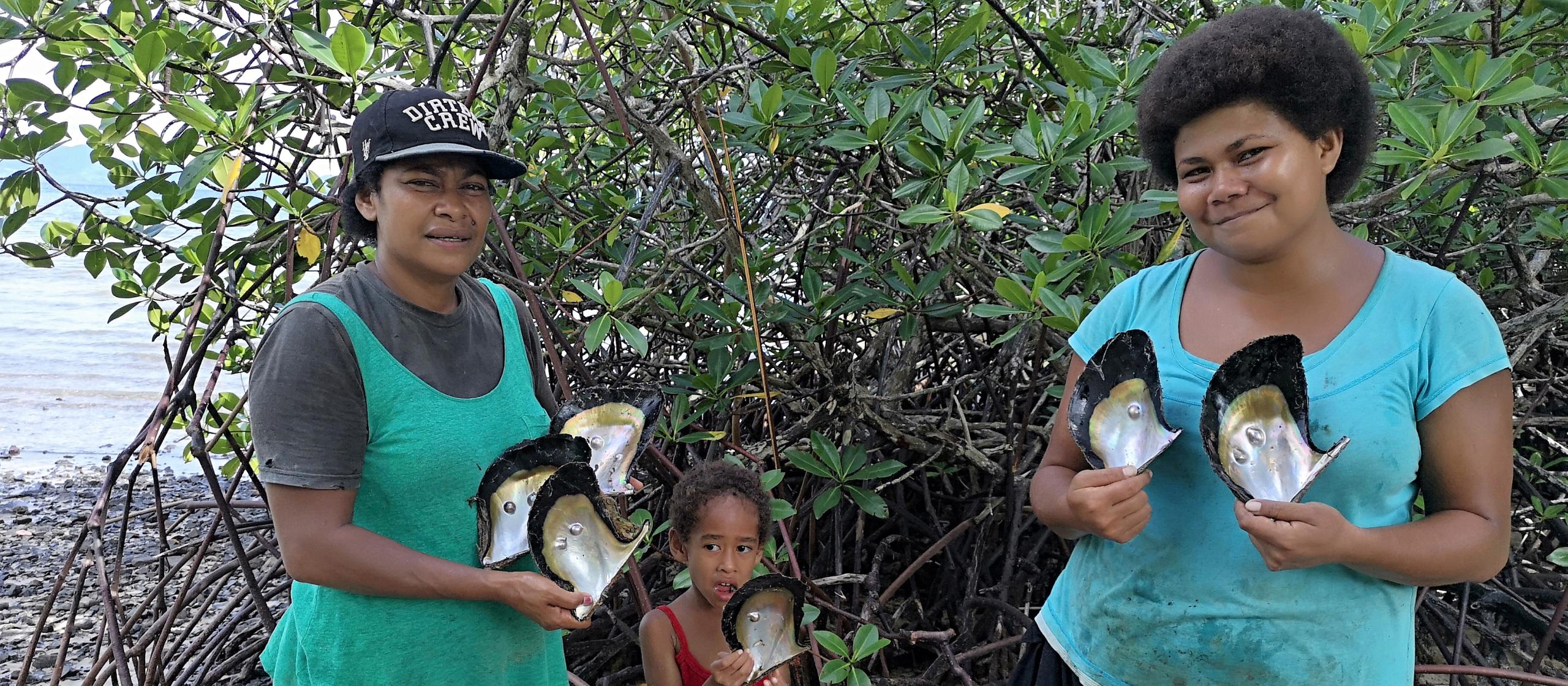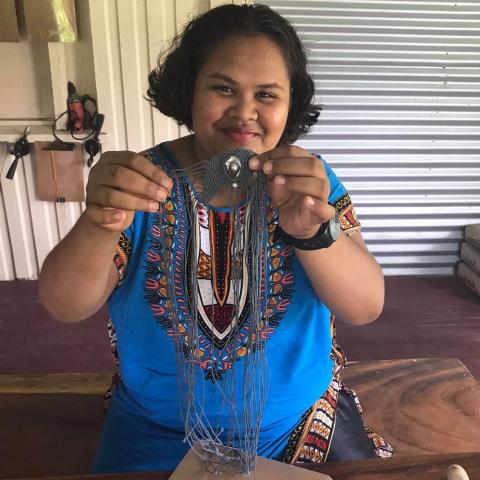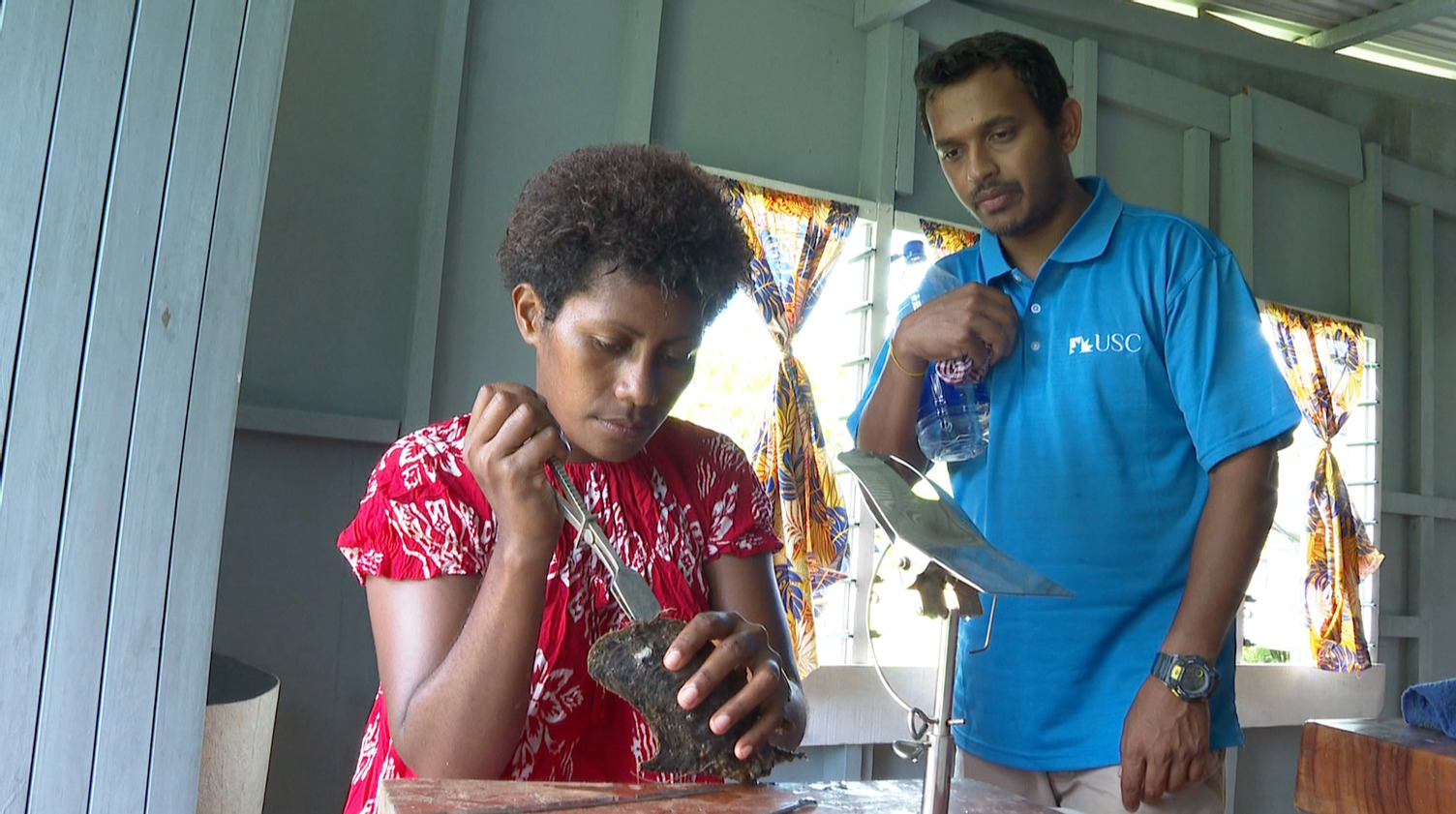- HomeHome
-
About ACIAR
- Our work
- Our people
-
Corporate information
- ACIAR Audit Committee
- Commission for International Agricultural Research
- Policy Advisory Council
- Agency reviews
- Executive remuneration disclosure
- Freedom of information (FOI)
- Gifts and benefits register
- Information publication scheme
- List of new agency files
- Contracts
- Legal services expenditure
- Privacy impact assessment register
- Commonwealth Child Safe Framework
- Benefits to Australia
- Careers
- 40 years of ACIAR
-
What we do
- Programs
- Cross-cutting areas
- Resources
- Where we work
-
Funding
- Research projects
- Fellowships
-
Scholarships
- John Allwright FellowshipScholarships to study in Australia for ACIAR partner country scientists to have Australian postgraduate qualifications
- ACIAR Pacific Agriculture Scholarships and Support and Climate Resilience Program
- Alumni Research Support Facility
- Publications
- News and Outreach
Date released
08 March 2021
Cultured half-pearls are the Pacific's most valuable and promising aquaculture commodity. ACIAR-supported researchers are working with communities to harness this ocean resource to empower women and improve coastal livelihoods.
Compatible with traditional Pacific lifestyles, cultured half-pearls, also known as mabé pearls, present communities with significant opportunities to boost household incomes.
While prevalent in French Polynesia where pearl farming has been actively introduced to remote atolls and islands, the industry and the associated opportunities that go with it are under-developed throughout the western Pacific region.
In partnership with the University of the Sunshine Coast, ACIAR has been supporting pearl farming research and development in Fiji, Tonga and Papua New Guinea through a five-year project to grow the industry to its potential and to increase the resilience, productivity and livelihood opportunities for pearl farmers.
New incomes empower change
In Fiji, seven communities are reaping the benefits of mabè pearl farming, including two remote coastal villages in Savusavu. Surrounded by clean, pristine waters, the villages of Ravita and Raviravi in Vanua Levu, makes an ideal location for culturing pearl oysters.
In Ravita village, the Drodromalua Women's Group (DWG) is a small community group consisting of six members. Mrs Ateca Maqalau, Acting President of the DWG, explained that the women are mabé pearls farmers, which has given the village an excellent opportunity to generate income.
‘We prefer the mabé pearls as they are easier to grow and maintain and one mabé shell can contain up to three pearls and each A grade pearl once processed into a handicraft item can sell for over A$50.
We separate the pearls by a grading system with grade A being the best and grade D being the lowest quality’, she said.
The majority of the mabé pearls are sold to handicraft centres, and a minor portion is retained by the communities to make handicraft items.
The project beneficiaries are supported with a wide range of training, such as financial literacy and making handicrafts and jewellery.
‘These trainings have enhanced our skills; the women now have a working knowledge of basic banking and budgeting, credit and debt, income planning, taxes, business continuity planning, networking, business model development and jewellery making. The biggest skill boost is jewellery and handicraft making training,’ added Mrs Maqalau.
Through ACIAR, the women have been trained in handicraft, and jewellery production using hand-held tools, as the village does not have electricity. The jewellery is made from mabé pearls and polished to value add and sold at a range from A$20-90.
Ravita village women have had two successful harvests with each harvest bringing about A$6,000 to the community. The pearl farms have contributed towards household funds and future village development such an evacuation centre.
‘We are prone to natural disasters as a coastal community. The women are building an evacuation centre from the money we have collected from pearl farming. The construction will start in February, said Mrs Maqalau.
In Raviravi village, similar sentiments are shared by the Navatudua Women's Group (NWG). At 19-years of age, Barabara Bradburg, is the youngest member of the group and the lead for the group's jewellery and handicraft centre, located in the Raviravi community hall.
‘I am a single parent who dropped out of school due to financial issues, and I never thought I could be a pearl farmer. I have been able to build a house for myself, and I am saving up for my daughter's education, so that she does not repeat the cycle that I have’, she said.
Ms Bradburg added that the benefits of pearl farming is not just for the individuals but trickled down to the community as well.
‘From each harvest, we earn around A$12,000, and we have been able to employ the men and youth of the village to help us to bring in the oysters during harvesting. With our earnings, we have partially contributed to building a seawall that protects our community from sea surges, and we have bought a boat to help with our pearl farming’, she added.
How does pearl farming work?
Pearl project scientist -Fiji from the University of the Sunshine Coast, Dr Pranesh Kishore says that mabé pearl culture system is simple and is easily taught to local communities.
‘This project promotes alternative livelihood to local communities in remote coastal communities. When we first started there was very little knowledge on mabé pearl farming in Fiji, as the project progressed the capacity was built within the Ministry of Fisheries as well, which has led to expert mabé pearl project officers in the Ministry ensuring there is sustainability for these project’s life and spin-off projects’, he said.
The Ministry of Fisheries is an active partner and supports the project through their fisheries officers who visit the community and supply materials such as ropes, spat collectors and support training that teaches communities how to deploy spat collectors, monitor these collectors and care for the oysters.
Dr Kishore added that although mabé pearl farming can take three years, but the results are worth the wait.
‘The first process once we have identified the site as a good site for mabé pearl farming is the deployment of spat collectors for recruitment of spat. Spat collectors stay in the water for about 12 months until harvesting’.
After the harvesting, resulting oysters are cultured for another 12 months until they reach a suitable size and are implanted and left for another 12 months before the mabé pearls inside them are harvested. It takes about three years, and the women are trained at every stage", he added.
ACIAR Research Program Manager for Fisheries, Prof Ann Fleming said that mabé pearl farming in coastal communities offers culturally and socially suitable livelihood opportunities that is highly beneficial to families both economically and, for women, personally.
‘This project created opportunities for women's economic empowerment and provided a range of supports through which women could exercise their agency, individually and collectively, to achieve their goals’.
‘Fijian women have been empowered through gaining skills in pearl production, increased income gained from mabé production and handicraft enterprises, improved status in families and communities and enhanced personal satisfaction from engaging in creative enterprises’, she said
Pandemic pause
One unexpected challenge that the women of both Raviravi and Ravita did not expect was border closure due to the COVID-19 pandemic, which led to a stop in tourism.
‘Our small showroom used to be a tourist attraction, and we would take our handicrafts to resorts and local markets for tourists. Since the border closure our market has taken a hit’, said Ms Bradburg.
The women in both villages have not been discouraged by this; instead, they are exploring local domestic markets and work with the Ministry of Fisheries to advertise their products.
Ms Bradburg added that they were working on a Facebook page for the group, but they needed to invest in an internet tower due to their community's remoteness.
‘Our pearl farm has been featured in the local media generating a lot of interest, and currently we are working towards co-contributing towards an internet tower with the Government's assistance. This is a project that keeps giving’, she said.
Future plans
‘Local pearl farming in Fiji not just empowers the coastal communities, but also the women who now have an alternative source of livelihood and can be financially empowered and independent. They also learn skills that ensure that the project remains sustainable and other communities get inspired and learn sustainable skills’, said Dr Kishore.
According to Dr Kishore, due to mabé pearl farming's success, from Raviravi and Ravita, the Ministry of Fisheries has received several requests from nearby coastal villages to learn mabé pearl farming as well.
As a result, the Ministry of Fisheries is continuing its support by identifying suitable new mabé pearl farm sites and deploying additional spat collectors.
This project supports the communities of Raviravi and Ravita to meet Sustainable Development Goal number 14, which aims to conserve and sustainably use the oceans, seas and marine resources for sustainable development.
The Developing pearl industry-based livelihoods in the western Pacific is an ACIAR-funded project led by the University of the Sunshine Coast and supported by the Fijian Ministry of Fisheries.





